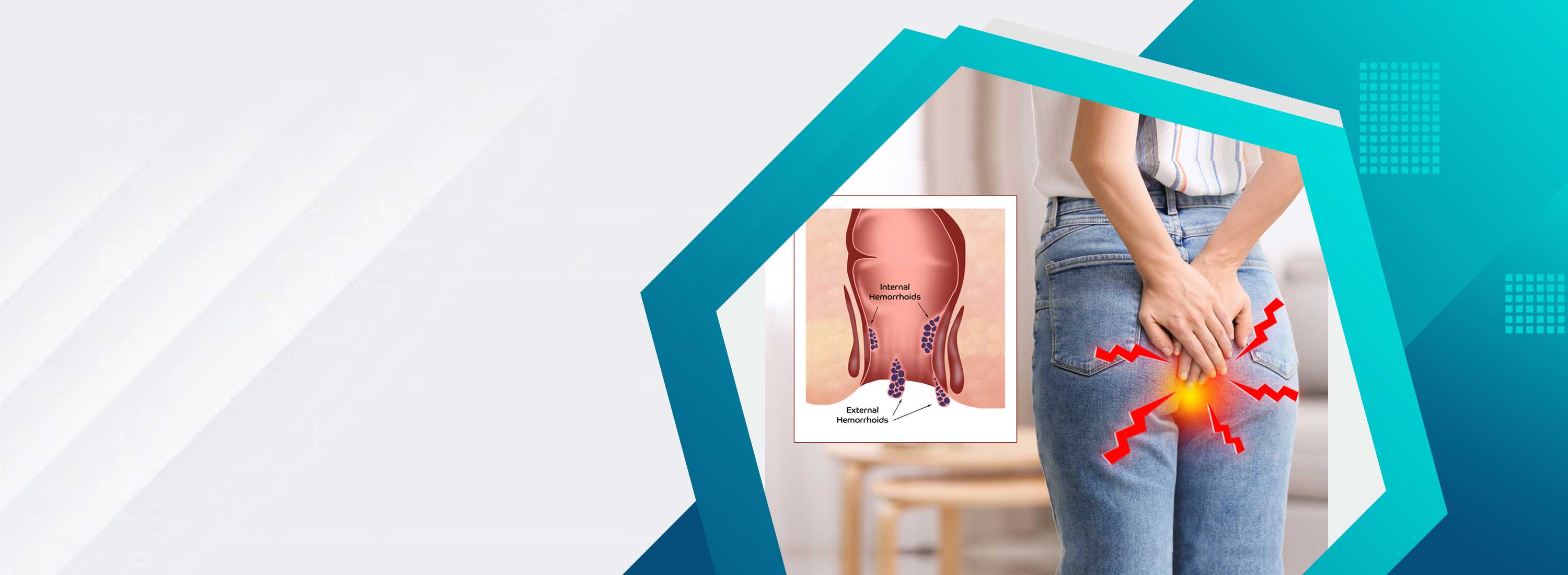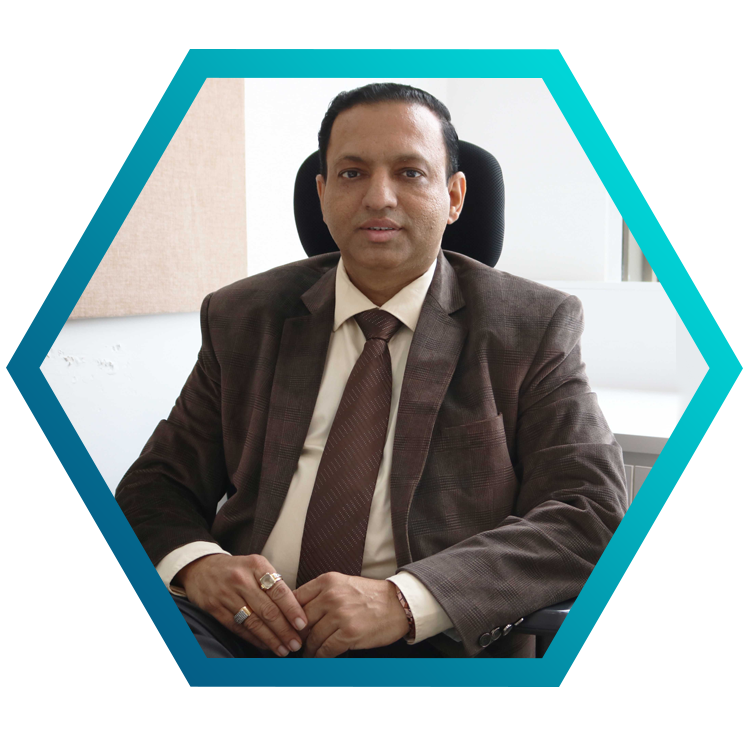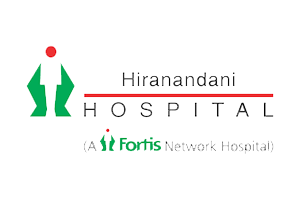



MS, FIAGES, FMAS, FCPS (Surgery), FICS (USA), FALS
Consultant Gastrointestinal & laproscopic Surgeon
Proctologist, Colorectal & Laser Surgeon
Dr. Abhijit G Bagul is an MBBS & MS in Surgery & has been awarded Fellowship in minimal access surgery (FMAS) from Sir J.J. Group of hospitals, Mumbai. He has been also awarded with fellowship at the Indian Association of Gastro-intestinal Endo-surgeons from the prestigious KEM Hospital, Mumbai.
Two of his research publications were reported to be rarest of rare cases in the world. (Details listed under Research Publications)
Dr. Abhijit has been very active with community services and was present onsite, treating several victims during the Bhuj (Gujrat) earth quake disaster. He has been very instrumental in organizing different types of surgical camps for poor or low income group of patients.
Dr. Abhijit Bagul is a Piles and Hernia Specialist performing high volumes of Surgery. He expertise in performing Piles surgeries every day with the highest level of care. Every case is handled in a well-planned method to give – Holistic treatment with Enhanced Quality of Life. Attention to all details provided at the post-operative care to allow you to return to full-level of activities
P Proper Piles Cure
I Ideal doctor to get treated from
L Less blood loss
E Early recovery
S Simple painless treatment
The exact cause of hemorrhoids is unclear, but they’re associated with increased pressure in the blood vessels in and around your anus. This pressure can cause the blood vessels in the rectum and anus to become swollen and inflamed.
Factors predisposing to the development of hemorrhoids include:
irregular bowel habits (constipation or diarrhoea)
increased intra-abdominal pressure (prolonged straining) a low-fiber diet
pregnancy: the increased intra-abdominal pressure and the effect of straining at delivery can predispose to the development of piles
absence of valves within the haemorrhoidal veins
aging: as we grow older the body’s supporting tissues get weaker
being overweight or obese
The pressure causes the normal anal veins and tissue to swell. This tissue can bleed, often during bowel movements.
You may notice the following symptoms:
Blood in stools
Pain while defecating
Painful hard lump in the anus
Mucus discharge while defecating
Itching sensation around the anus
Feeling of fullness in the bowels even after passing a stool
The severity of symptoms vary in patients and depends upon the grading of the piles and the type of piles: Internal Hemorrhoids usually present with painless rectal bleeding. If they are large they may emerge outside the anus (prolapse). Most prolapsed hemorrhoids shrink back inside the rectum on their own. Severely prolapsed hemorrhoids may protrude permanently and require treatment.
External hemorrhoids present with pain in the area of the anus. If a blood clot forms in an external hemorrhoid, it can be very painful (thrombosed external hemorrhoid)
If untreated, hemorrhoids may cause complications such as anemia with resultant generalized weakness from the chronic blood loss during defecation. There is a risk of developing strangulated hemorrhoids where the blood supply of a prolapsed pile gets occluded by the constriction of the anal sphincter.
Lifestyle changes to reduce the strain on the blood vessels in and around your anus is recommended to reduce the risk of hemorrhoids developing or recurring:
Increase the amount of fibre in your diet through foods like fruit, vegetables, wholegrains, pulses and beans, nuts and oats
Drink plenty of fluid especially water
Do not delay going to the toilet as this may make your stools harder and drier, which can lead to straining when you do go to the toilet
Avoid medication that causes constipation – such as painkillers that contain codeine
Lose weight if overweight
Exercise regularly –it can help prevent constipation and help you lose weight.
Banding is a non-surgical procedure where a very tight elastic band is put around the base of hemorrhoid to cut off its blood supply. Hemorrhoid should fall off after about a week.
Sclerotherapy: A chemical is injected into hemorrhoid to shrink it
Coagulation techniques: Laser or heat energy is used to coagulate blood in the internal hemorrhoids and harden them.
Surgery may be recommended if other treatments for hemorrhoids don’t work. Surgery carried out under general regional anesthesia is sometimes used to remove or shrink large or external hemorrhoids.
Hemorrhoidectomy:
Hemorrhoidectomy is the surgery to remove hemorrhoids. Conventional hemorrhoidectomy involves gently opening the anus so the hemorrhoids can be cut out. Hemorrhoidal artery ligation: Hemorrhoidal artery ligation is an operation to reduce the blood flow to your hemorrhoids. It involves inserting a small ultrasound probe into your anus that locates the vessels supplying blood to hemorrhoid. Each blood vessel is stitched closed to block the blood supply to the hemorrhoid, which causes hemorrhoid to shrink over the following days and weeks. The stitches can also be used to reduce prolapsing hemorrhoids (hemorrhoids that hang down from the anus).
Stapling, also known as stapled hemorrhoidopexy, is an alternative to a conventional hemorrhoidectomy. It’s sometimes used to treat prolapsed hemorrhoids.
Stapled hemorrhoidectomy is a misnomer since the surgery does not remove the hemorrhoids but rather, removes the abnormally lax and expanded hemorrhoidal supporting tissue that causes the hemorrhoids to prolapse downward.
In stapled hemorrhoidectomy, the surgery is done through the anal canal. A circular, hollow tube is inserted into the anal canal. The procedure is done through this tube.
During the stapled hemorrhoidectomy, the arterial blood vessels that travel within the expanded hemorrhoidal tissue and feed the hemorrhoidal vessels are cut. This reduces the blood flow to the hemorrhoidal vessels and reduces the size of the hemorrhoids.
The staples are needed only until the tissue heals. They then fall off and pass in the stool unnoticed after several weeks. Stapled hemorrhoidectomy is designed primarily to treat internal hemorrhoids, but if external hemorrhoids are present, they may be reduced as well.
Stapling has a shorter recovery time than a traditional hemorrhoidectomy, and you can probably return to work about a week afterward. It also tends to be a less painful procedure.
You should take the medications and pain killers as prescribed
Drink plenty of water to avoid dehydration and constipation.
Have a diet that is high in fibre.
Use ice packs to relieve the pain and swelling.
A Sitz bath several times a day will help relieve discomfort.
You should avoid lifting heavy weights for at least 5 to 7 days.

Address: C7, Budhyadev Mandir Marg, Sector 4, Sanpada, Navi Mumbai, Maharashtra 400705

Address: X8 & X8/1, Thane - Belapur Road Opp Kopar Khairane Station, Navi Mumbai, Maharashtra 400710

Address: Plot 12-13, Sector 20, Kopar Khairane, Navi Mumbai, Maharashtra 400709

Address: Plot No. 28, Juhu Chowpatty Marg, Juhu Nagar, Sector 10A, Vashi, Navi Mumbai, Maharashtra 400703

Address: Sector 5, Nerul, Navi Mumbai, Maharashtra 400706
Had to undergo emergency surgery.Very talented doctor.Gave me Absolutely cosmetic scar not at all visible.Solves all problems easily.Attends all calls on priority.will never forget such a wonderful personality surgeon
Dr.Abhijit Bagul had an amiable personality and altruistic motives, Thank you for being dedicated and compassionate doctor that you are! Great job done by Fransclin (Sai Snehdeep Hospital's Insurance Staff). Thank you for all the great work done by Dr.Abhijit and his team.
Dr Bagul is a really practical and knowledgeable person. I had a really huge hernia after pregnancy which he diagnosed properly and we went ahead with a planned surgery for the same at MPCT hospital. He has monitored and advised me properly both before and after surgery. I has provided inputs on queries and issues whenever needed. Very approachable - even on phone. Highly recommended. Thank you so much doctor.
I was diagnosed with bilateral inguinal Piles. I was looking for a nearby hospital which is MPCT. I found Dr Abhijit Bagul online n consulted him. He suggested not to delay surgery. He was patient, helpful n answered all my queries. We went for a planned surgery on 23rd Jan 2020. Surgery went well n I was discharged on 24th. I took twin sharing room n stay at hospital was pleasant. Staff was friendly n helpful.
Great Genuine Timely Level Awesome service and advice by Dr. Abhijit Bagul, Best Laparoscopic, Piles Surgeon in Navi Mumbai at the right time right place as per your needs and requirements with all the best possible he could do to solve my case. #SecondTime.